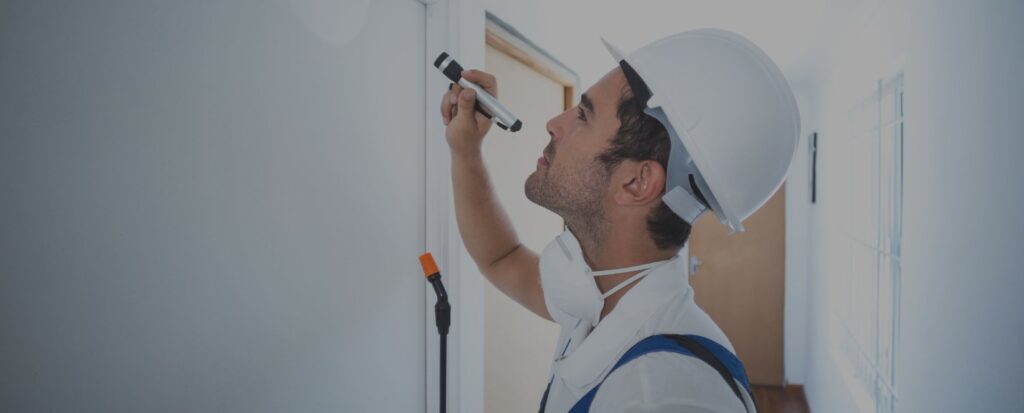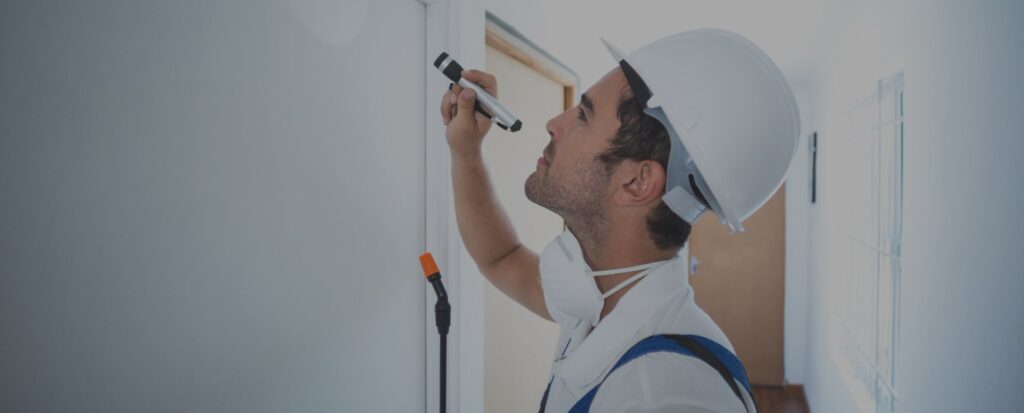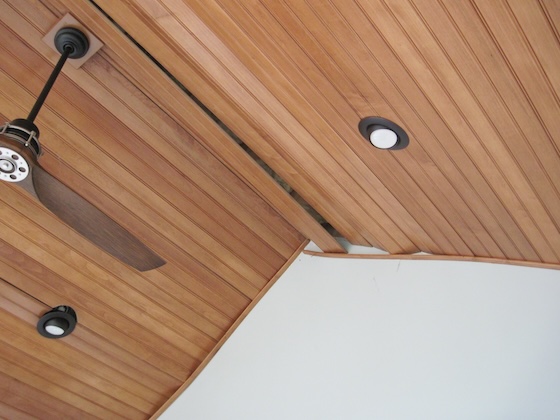
Understanding the behavior and habits of bed bugs
Bed bugs are small, oval-shaped insects that feed on the blood of humans and other warm-blooded animals. They are primarily nocturnal, which means they tend to be most active during the night when their hosts are sleeping. This is because bed bugs are attracted to the warmth and carbon dioxide that humans emit while they sleep.
One of the key characteristics of bed bugs is their ability to hide and fit into tiny cracks and crevices. They can easily hide in bedding, furniture, baseboards, and even electrical outlets. They are skilled hitchhikers and can be transported from one location to another through luggage, clothing, and other personal belongings. It is important to note that while bed bugs do not transmit diseases, their bites can cause itchiness, redness, and discomfort. Understanding their behavior and habits is crucial in successfully preventing and controlling infestations.
Identifying common signs of a bed bug infestation
Blood stains on your sheets or pillowcases are a common sign of a bed bug infestation. These tiny pests feed on human blood, leaving behind small, reddish-brown droplets as evidence. Look for these stains near the corners or edges of your bed, where they are most likely to have been crushed after feeding.
Another telltale sign is the presence of dark spots on your bedding or furniture. Bed bugs produce excrement that is dark in color and resembles small dots or smears. These fecal stains can often be found on the mattress, sheets, or even on nearby walls or furniture. If you notice any of these spots, it may indicate an infestation and warrant further investigation. Remember, early detection is key in successfully dealing with a bed bug problem.
Tips for inspecting your home for bed bugs
It is crucial to regularly inspect your home for bed bugs to catch any infestations early on. Start by thoroughly examining your mattress and box spring, paying close attention to the seams, tufts, and folds. Look for any signs of small, reddish-brown bugs or dark spots, which could indicate bed bug activity. Additionally, inspect the bed frame and headboard, as well as any nearby furniture or upholstery. Remember to check behind pictures, along baseboards, and in electrical outlets.
Bed bugs can also hide in cracks and crevices, so inspect curtains, rugs, and carpeted areas as well. Don’t forget to examine any luggage or bags that have recently been brought into your home, as bed bugs are known to hitch rides on these items. If you discover any signs of a bed bug infestation during your inspection, it is crucial to take immediate action to prevent further spread and seek professional help if necessary. Regular inspections will help keep your home bed bug-free and give you peace of mind.

How to properly clean and maintain your bedding to prevent infestations
Regularly cleaning and maintaining your bedding is essential in preventing bed bug infestations. By following a few simple steps, you can reduce the risk of these pesky bugs making a home in your sheets and blankets. First and foremost, it is important to wash all bedding materials, including sheets, pillowcases, and blankets, in hot water. The high temperature helps kill any bed bugs that may be present and also removes their eggs. Additionally, it is advisable to dry your bedding on a high heat setting to further eliminate any remaining bugs or eggs.
In addition to regular washing, it is crucial to inspect your bedding for any signs of bed bugs. Look for small, reddish-brown stains or dark spots on your sheets, as these could indicate bed bug excrement. If you notice any of these signs, immediately remove and wash the affected bedding, as well as inspect and treat your mattress and surrounding area. Lastly, consider using mattress and pillow encasements that are specifically designed to be bed bug-proof. These covers create a barrier between the bugs and your bedding, preventing them from infesting your sleeping area. Regularly clean and maintain your bedding, and you can rest easy knowing that you are taking proactive steps to prevent bed bug infestations.
Steps for reducing clutter and creating a less attractive environment for bed bugs
One of the key steps in reducing the likelihood of a bed bug infestation is to keep your living space as clutter-free as possible. Bed bugs thrive in areas with lots of hiding spots, so by minimizing clutter, you are creating a less attractive environment for them to thrive. Start by decluttering your home and getting rid of any unnecessary items. Dispose of old newspapers, magazines, and cardboard boxes, as these are perfect hiding places for bed bugs. Organize your belongings in sealed storage containers to further reduce potential hiding spots.
In addition to decluttering, it is important to regularly vacuum and clean your living space. Vacuuming not only removes any adult bed bugs and eggs that may be present, but it also helps to disturb their hiding places. Pay special attention to the seams and crevices of your furniture, as bed bugs often hide in these areas. After vacuuming, be sure to empty the vacuum bag or canister into a sealed plastic bag and dispose of it in an outdoor trash bin. Clean your bedding and linens regularly in hot water to kill any bed bugs or eggs that may be present. By maintaining a clean and clutter-free environment, you are taking proactive steps to minimize the risk of a bed bug infestation.
Techniques for protecting your luggage and belongings while traveling to avoid bringing bed bugs home
When traveling, it is essential to take precautions to prevent bringing bed bugs home with you. One effective technique is to use luggage liners or encasements. These liners create a barrier between your belongings and any potential bed bugs in hotel rooms or other accommodation. Additionally, using hard-sided luggage can provide added protection as it is more difficult for bed bugs to penetrate through the material compared to soft-sided bags.
Another useful strategy is to keep your luggage elevated and away from the floor. Bed bugs often crawl up from the ground, so keeping your bags on luggage racks or stands can help minimize the risk of infestation. Avoid placing your luggage on beds, upholstered furniture, or carpets as these are common hiding places for bed bugs. Remember to also inspect your luggage before leaving your travel destination and wash all of your clothes as soon as you return home, preferably using hot water.
Strategies for preventing bed bugs from entering your home through secondhand furniture or clothing
Secondhand furniture and clothing can be a cost-effective way to furnish your home or update your wardrobe. However, it is important to take precautions to prevent bed bugs from entering your home through these items. One of the first steps is to carefully inspect any secondhand furniture or clothing before bringing them into your home. Look for signs of bed bugs such as live bugs, dark spots or stains on furniture, or tiny eggs and shed exoskeletons. Pay close attention to seams, corners, and joints where bed bugs tend to hide. If you notice any signs of a bed bug infestation, it is best to avoid purchasing or accepting the item.
Once you have ensured that the furniture or clothing is bed bug-free, it is still a good idea to take additional preventative measures. Consider using a bed bug-proof mattress and pillow encasement on any secondhand mattresses or pillows. These encasements are designed to prevent bed bugs from entering or escaping, providing an extra layer of protection. Additionally, if the furniture has fabric or upholstery, consider vacuuming and steam cleaning it before bringing it inside your home. This can help eliminate any potential bed bug eggs or pests that may be hiding in the fabric. By being diligent and taking these preventative measures, you can greatly reduce the risk of bed bugs entering your home through secondhand furniture or clothing.
Tips for selecting and using bed bug-proof mattress and pillow encasements
Bed bug-proof mattress and pillow encasements are a crucial tool in the prevention and control of bed bug infestations. When selecting these encasements, it is important to choose ones that are specifically designed to be bed bug-proof. Look for encasements that are labeled as such and have been tested and proven effective in keeping bed bugs out.
When it comes to using these encasements, proper installation is key. Start by removing all bedding from the mattress and pillows. Place the encasements over the mattress and pillows, ensuring a snug fit and that all zippers are completely closed. This will create a barrier that not only prevents bed bugs from infesting your sleeping area but also traps any existing bed bugs inside, eventually killing them. Regularly inspect the encasements for any signs of damage, such as rips or tears, and promptly repair or replace them if needed. Remember, the integrity of the encasements is crucial in keeping your bed bug-free. Contact Pro Pest Control if you have or might have a bed bug problem in your home or business. We’re here to help!
Don’t Let the Bed Bugs Bite: Tips for Preventing Infestations was first seen on https://propestcontrolservices.com/





More Stories
The Role of Chimney Inspections in Homebuying
The Rise of Bed Bugs: Why Are They Making a Comeback?
Chimney Masonry Repair 101: Restoring Beauty and Functionality